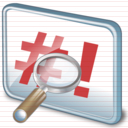Forecasting
An accurate forecast has two important elements:
1. The Data
Historical data and researched data are
vital for forecasting. They provide the predicted demand for each month so that
managers can forecast the labor and food needed in each season.
2. The Analysis
While most POS systems gather the data and
produce historical reports, it lets you forecast what the impact of a
promotion will be.

How?
1.
Budget
Predict
all the supporting facilities needed, including place, seats, billing and so
on.
2.
Forecasting for labor
There are different positions in a restaurant including host, greeter,
steward etc. The service time is also different for each position. Managers are
asked to predict how many staff should they have and set a schedule for each
staff.
3.
Existing Business recorded for forecasting
Identify and monitor repeat
customers and chart customer visits to identify patterns. It can be a very useful
data in long run since some seasonal cycles or patterns can be discovered. And,
managers can forecast the future trend and set up an appropriate method to maximize
the profit.
Food Cost Control Process
1. Menu Planning & Standard Recipes
Restaurants’ recipes are kinds of standard costs for each ingredient. Recipes provide a theoretical cost to compare to actual so that managers can control the cost of purchasing food. It is the fundamental element for measuring the cost of each menu item and the overall food cost.

Resource: restonoodlefactory.com
2. Purchasing Systems
Cooperate with suppliers is important method to control the cost. Higher purchasing quantity will decrease the average cost since the fixed cost can be shared. However, it is needed to be aware of the demand. If the purchase quantity is much higher than the demand, it becomes waste and the cost is conversely higher.
3. Receiving Process
It’s critical for a manager or senior level staff member to check the deliver for accuracy. If there are any wrong deliver, a quick refund or exchange can be done in order to reduce the time cost and waste of unneeded ingredients. So, it is important that each case must be counted and spot checked for proper weight and quality.
4. Inventory Cycles
An inventory count weekly or monthly is needed to determine actual food used during the timeframe. The inventory should be recorded in order to make a historical data. It can be a reference for managers to check he seasonal trend and control the inventory more properly.
Resource: chefs-resources.com
5. Accounting & Reports
A financial and account department is vitally important to deal with the above points. An accounting process will generate the reports needed to determine if expenses are in line, and if they are not where to look to fix the problem.
No comments:
Post a Comment